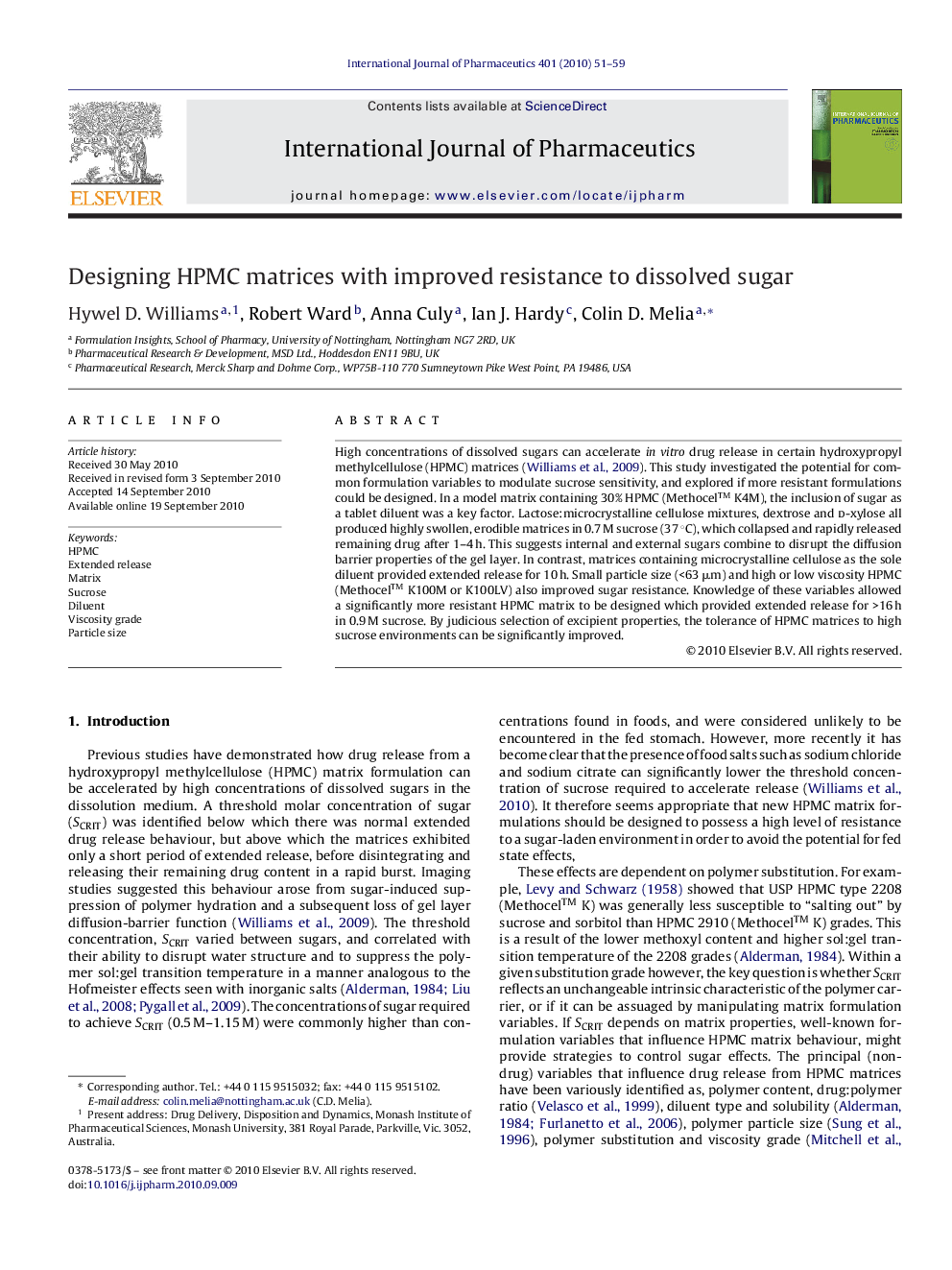| کد مقاله | کد نشریه | سال انتشار | مقاله انگلیسی | نسخه تمام متن |
|---|---|---|---|---|
| 2503675 | 1557441 | 2010 | 9 صفحه PDF | دانلود رایگان |

High concentrations of dissolved sugars can accelerate in vitro drug release in certain hydroxypropyl methylcellulose (HPMC) matrices ( Williams et al., 2009). This study investigated the potential for common formulation variables to modulate sucrose sensitivity, and explored if more resistant formulations could be designed. In a model matrix containing 30% HPMC (Methocel™ K4M), the inclusion of sugar as a tablet diluent was a key factor. Lactose:microcrystalline cellulose mixtures, dextrose and d-xylose all produced highly swollen, erodible matrices in 0.7 M sucrose (37 °C), which collapsed and rapidly released remaining drug after 1–4 h. This suggests internal and external sugars combine to disrupt the diffusion barrier properties of the gel layer. In contrast, matrices containing microcrystalline cellulose as the sole diluent provided extended release for 10 h. Small particle size (<63 μm) and high or low viscosity HPMC (Methocel™ K100M or K100LV) also improved sugar resistance. Knowledge of these variables allowed a significantly more resistant HPMC matrix to be designed which provided extended release for >16 h in 0.9 M sucrose. By judicious selection of excipient properties, the tolerance of HPMC matrices to high sucrose environments can be significantly improved.
Figure optionsDownload as PowerPoint slide
Journal: International Journal of Pharmaceutics - Volume 401, Issues 1–2, 30 November 2010, Pages 51–59